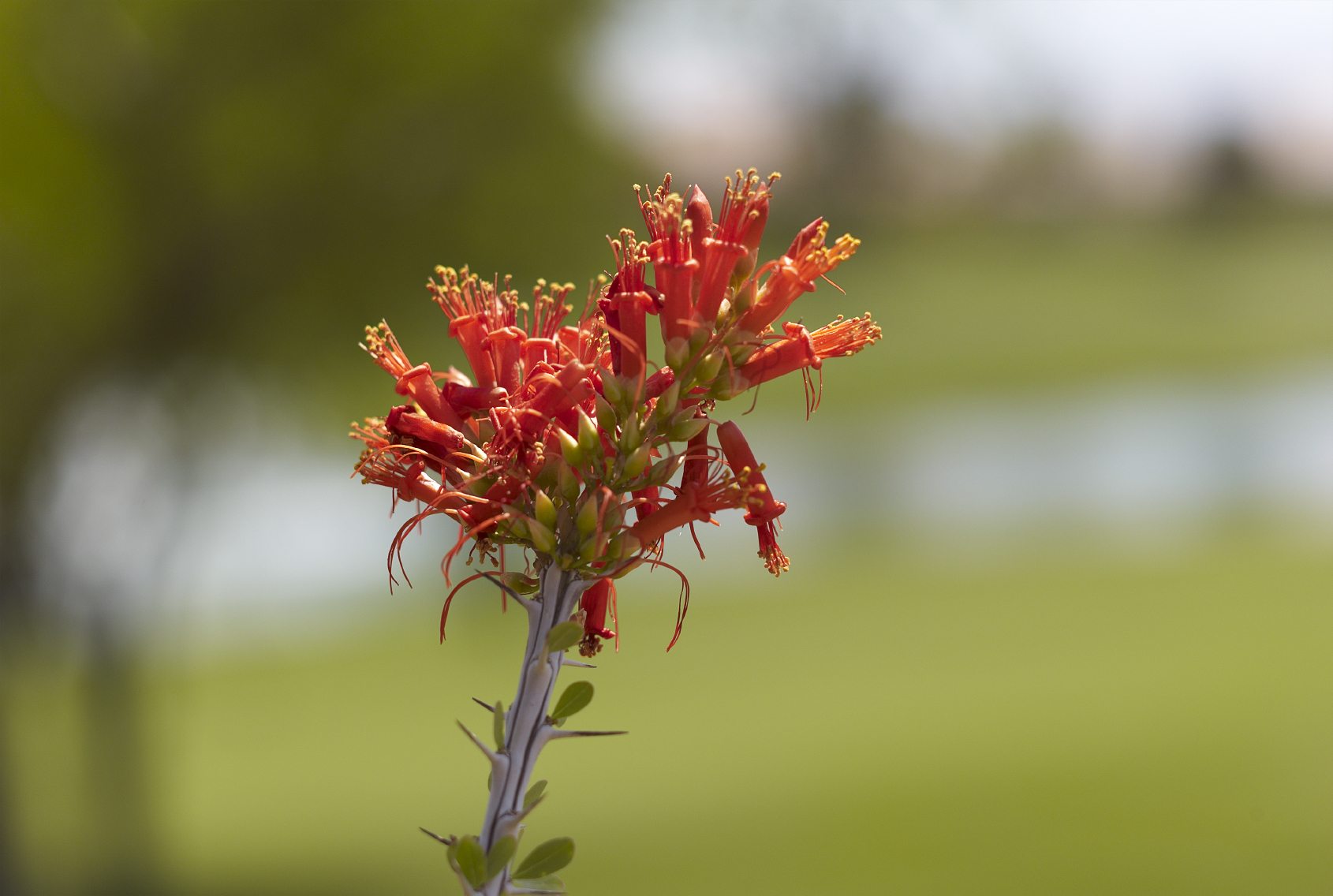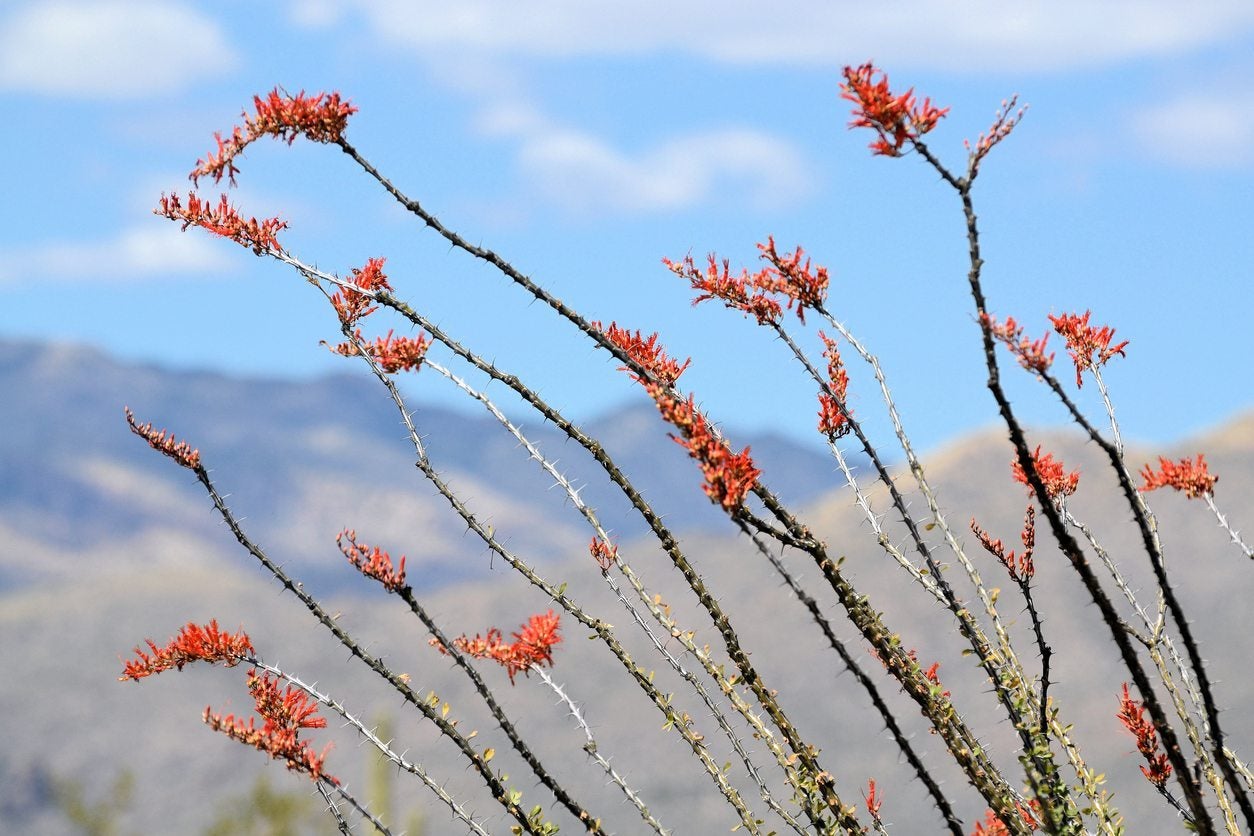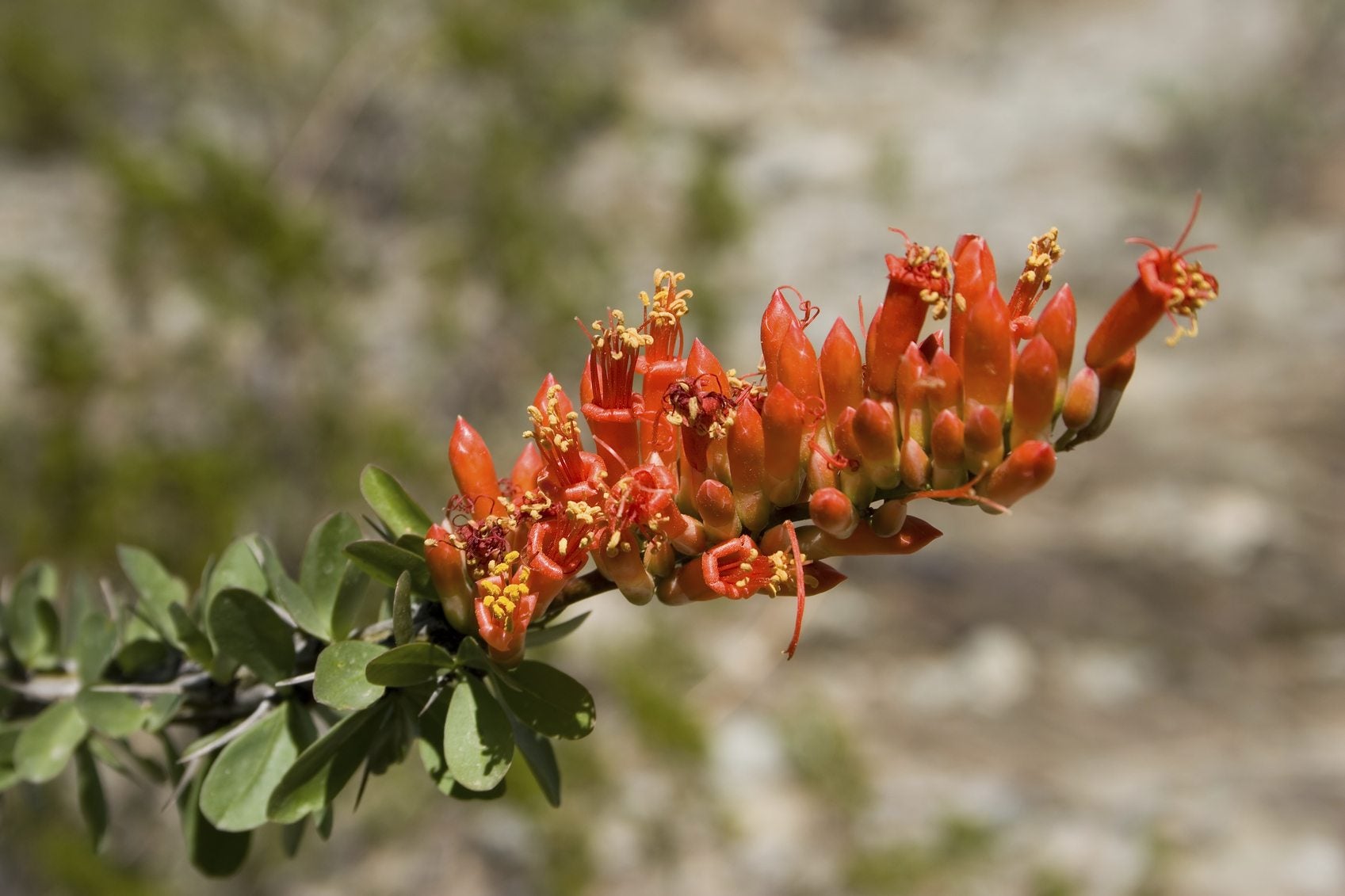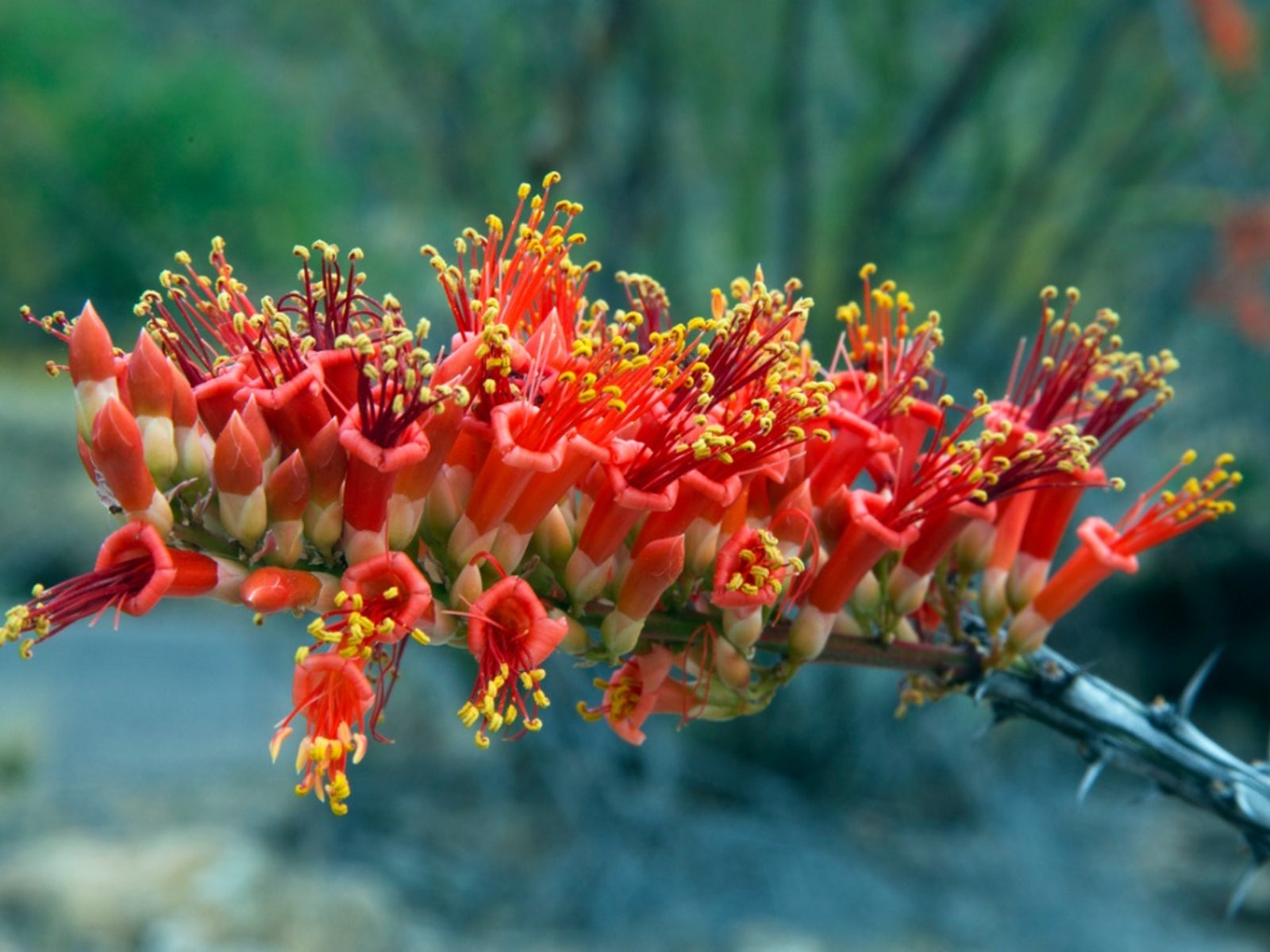Why Is My Ocotillo Not Blooming – How To Get Ocotillo Flowers


The Ocotillo is native to the Sonoran and Chihuahuan deserts. These spectacular plants grow in open stony, arid areas and are notable for their bright red flowers and whip-like stems. Wild ocotillo is also known as candlewood, slim wood, flaming sword, and many other pictorial names. If you're wondering, "Why is my Ocotillo not blooming?" read on for some possible reasons and solutions to make this desert wonder fully flower.
Why is My Ocotillo Not Blooming?
Ocotillo plants are common in their native regions. The slender stems and tiny leaves are accents for the crimson blooms that decorate the tips of the branches. The plants make excellent natural screens and borders, adding bright garden accents during their bloom time. Native garden centers can provide you with healthy specimens of the plants for a natural and easy-to-grow desert landscape solution. Also known as Jacob's Staff, Ocotillo is a tenacious desert dweller which is mostly leafless until the rainy season. The oval leaves quickly disappear when the soil dries out, leaving behind spiny, skinny branches that may approach 15 feet (5 m.) in length. Their impressive height and rapid growth make these plants natural for arid region screens or hedges. In spite of their mostly leafless state, the long stems are adorned with small spines which serve as an effective barrier to most, while creating shelter for tiny birds and animals. New plants should be planted in the same orientation in which they were grown. This is because the southernmost side has built up thicker tissue to resist the harsh sun. Incorrect orientation can cause severe sunscald on the more tender northern side of the plant.
When Does Ocotillo Bloom?
When does Ocotillo bloom? March through June is the period in which to expect bright crimson-orange flowers on your Ocotillo. The Ocotillo blooming season is directed by the rainy season. Too much or too little rain can delay or inhibit Ocotillo flowers. The plants are quite sensitive to soil type and require gritty, well-draining soil. In fact, low fertility seems to be a key to making this plant happy. Using compost or excess fertilizer will actually result in an unhappy plant. Newly planted specimens benefit from consistent watering before establishment but, otherwise, the plants need very little special care. The 1 to 2 inch (2.5-5 cm.) long, red-lobed blooms will naturally fall off when they have been fertilized.
How to Make an Ocotillo Bloom
If you are frustrated by your plant's inability to flower, take heart. Newly planted Ocotillos require some time to re-establish their root systems. This can inhibit blooming. Other factors that may delay flowering would be a lack of water in late winter to early spring. Excess fertilizer or rich soil can also cause Ocotillo to produce few to no flowers. These plants really need fairly harsh conditions to thrive. They aren't going to produce flowers in a wet, cold area either. Mimicking their native conditions is how to make an Ocotillo bloom. As with any plant, they will thrive and perform best if they are in a site that closely resembles their wild soil, lighting, and moisture conditions.
Gardening tips, videos, info and more delivered right to your inbox!
Sign up for the Gardening Know How newsletter today and receive a free copy of our e-book "How to Grow Delicious Tomatoes".

Bonnie Grant is a professional landscaper with a Certification in Urban Gardening. She has been gardening and writing for 15 years. A former professional chef, she has a passion for edible landscaping.
-
 Get Ready For A Summer Of Hummers! Grow These Full Sun Hummingbird Plants and Flowers
Get Ready For A Summer Of Hummers! Grow These Full Sun Hummingbird Plants and FlowersIf you’re lucky enough to enjoy a sunny backyard, make sure you are maxing out on your pollinator opportunities and grow these full sun hummingbird plants and flowers
By Tonya Barnett
-
 12 Lush Alternatives To A Lawn For Sustainable Spaces
12 Lush Alternatives To A Lawn For Sustainable SpacesAlternatives to a lawn are beautiful and also beneficial to your local ecosystem and its pollinators. Explore our top picks for plants to replace grass.
By Tonya Barnett
-
 Propagating Ocotillo Plants – How To Propagate Ocotillo Plants
Propagating Ocotillo Plants – How To Propagate Ocotillo PlantsWant some good news? Ocotillo propagation is surprisingly easy, but the bad news is that rooting seems to be rather hit or miss. If you're interested in giving it a try, click here to learn the basics of propagating ocotillo plants for your garden.
By Mary H. Dyer
-
 Ocotillo In Containers – Caring For Potted Ocotillo Plants
Ocotillo In Containers – Caring For Potted Ocotillo PlantsAlthough ocotillo is usually an in-ground plant, there's no reason you can't grow ocotillo in containers. If this idea strikes your fancy, this article can help. Just click here to learn about growing ocotillo in a pot.
By Mary H. Dyer
-
 Ocotillo Care: Tips On Planting Ocotillo In The Garden
Ocotillo Care: Tips On Planting Ocotillo In The GardenThe ocotillo plant is a desert shrub that produces a spectacle of bright, pink flowers on whip-like canes. It is often called ocotillo cactus but is not truly a cactus. Learn more about this plant and how to grow it here.
By Bonnie L. Grant